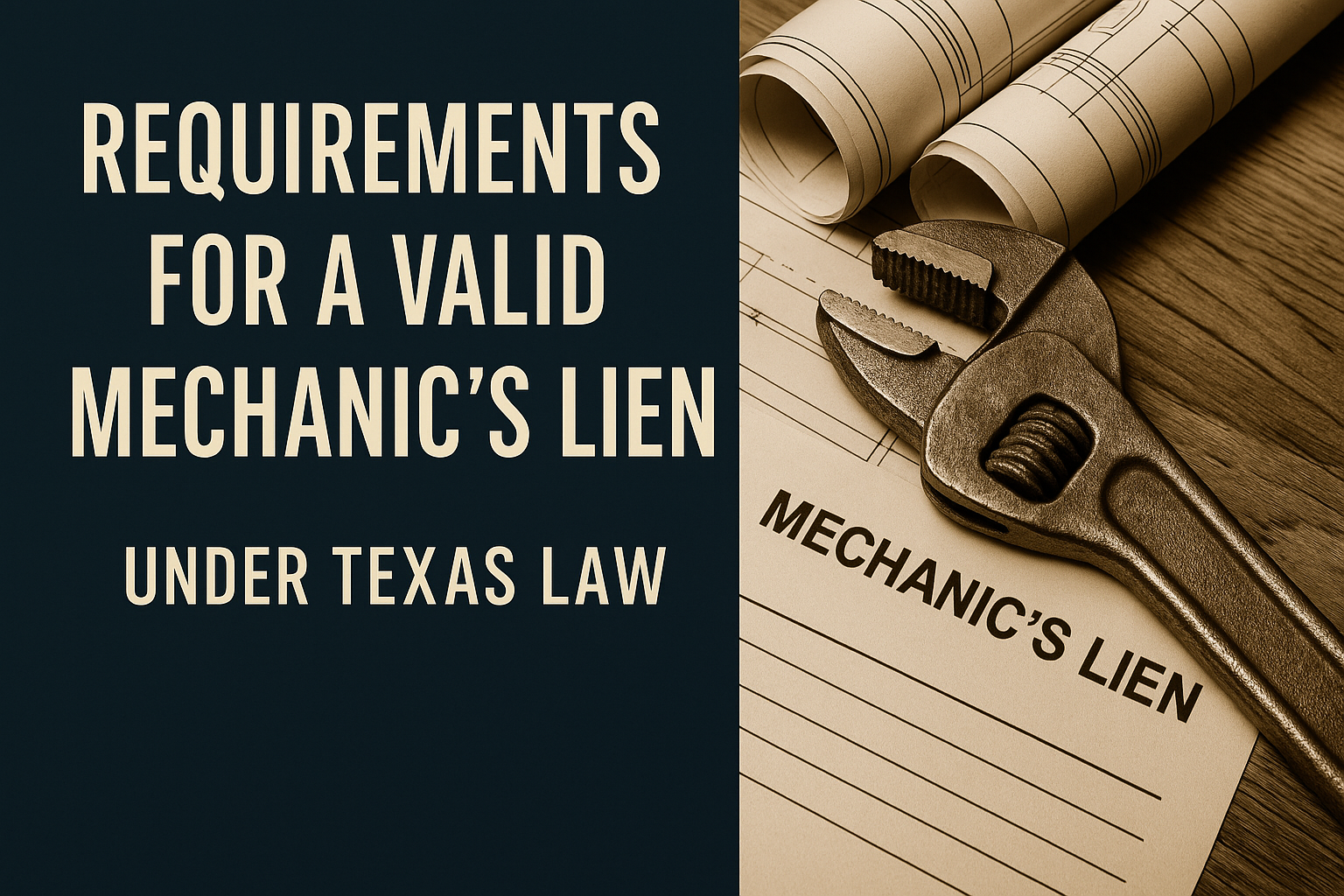
In Texas, a mechanic’s lien is a powerful tool that protects contractors, subcontractors, suppliers, and other professionals who provide labor or materials to improve real property. When properly perfected, it allows these parties to secure payment by placing a lien on the property improved by their work. However, Texas law imposes strict requirements for creating and enforcing a mechanic’s lien. Failing to follow these requirements exactly can render the lien invalid.
Who Can File a Mechanic’s Lien?
Generally, the following parties may be entitled to a mechanic’s lien in Texas:
● General contractors with a direct contract with the property owner.
● Subcontractors who provide labor or materials to the general contractor.
● Suppliers and vendors of building materials.
● Design professionals such as architects, engineers, and surveyors.
Notice Requirements
Texas has some of the strictest notice rules in the country. A lien claimant must provide the proper notices to the property owner (and in some cases the general contractor) at specific times:
● Subcontractors and suppliers must send monthly notices by the 15th day of the second month after labor or materials were provided (known as “Second Month Notices”) and, in some cases, by the 15th day of the third month (“Third Month Notices”).
● Original contractors with a direct contract with the owner generally are not required to send pre-lien notices.
Filing the Lien Affidavit
To perfect a lien, the claimant must file a lien affidavit in the real property records of the county where the project is located. Requirements include:
● Deadline to file: The 15th day of the 4th month after the claimant last provided labor or materials (for most projects). On residential projects, the deadline is shortened to the 15th day of the 3rd month.
● Contents of the affidavit: Must include the claimant’s name and address, a description of the work or materials provided, the property’s legal description, the amount owed, and the name of the party who contracted for the work.
● Verification: The affidavit must be signed and sworn to before a notary public.
Enforcement of the Lien
A mechanic’s lien does not automatically result in payment—it creates a legal claim against the property. If the owner still does not pay, the lienholder must file a lawsuit to foreclose the lien. In Texas:
● A lien claimant generally has two years from the last day they could have filed the lien affidavit, or one year after completion, termination, or abandonment of the project(whichever is later), to file suit.
Strict Compliance is Key
Texas courts strictly construe mechanic’s lien statutes. Small mistakes—such as missing a notice deadline or leaving out a required detail in the affidavit—can invalidate the lien. For that reason, contractors and subcontractors should keep detailed records, calendar deadlines carefully, and consider working with an attorney to ensure compliance.
✅ Takeaway: A mechanic’s lien can be one of the most effective ways to secure payment in Texas construction projects, but only if all statutory requirements are strictly followed.
At David C. Barsalou, Attorney at Law, PLLC, we help clients navigate business, family, tax, estate planning, and real estate matters ranging from document drafting to litigation with clarity and confidence. If you’d like guidance on your situation, schedule a consultation today. Call us at (713) 397-4678, email barsalou.law@gmail.com, or reach us through our Contact Page. We’re here to help you take the next step.